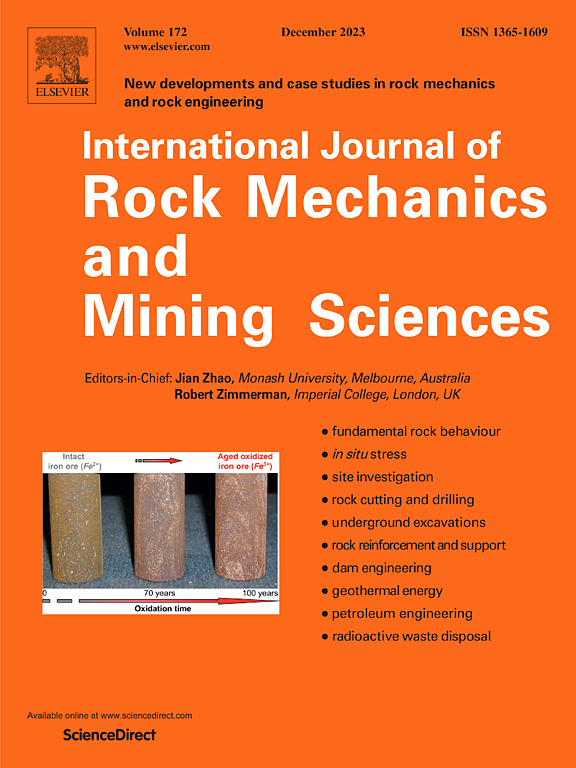FracGen:利用生成对抗网络对天然裂缝网络进行重建和升级
IF 7
1区 工程技术
Q1 ENGINEERING, GEOLOGICAL
International Journal of Rock Mechanics and Mining Sciences
Pub Date : 2025-04-19
DOI:10.1016/j.ijrmms.2025.106116
引用次数: 0
摘要
天然裂缝网络的精确建模对于了解地下结构及其性质至关重要,但传统方法往往难以处理复杂的几何形状和规模转换。在这项研究中,我们提出了一种新的非参数机器学习模型FracGen,它利用单图像生成对抗网络(SinGAN)来重建和升级天然裂缝网络。经过训练,使用来自不同地质地点的三个露头中的一个,FracGen模型可以在没有显式参数化的情况下复制天然裂缝的关键统计特性,并通过与真实裂缝网络的比较进一步验证。此外,我们还解决了裂缝网络升级的挑战,确保大规模模拟保留了在小尺度上观察到的关键特征。定量分析,包括余弦相似度测量和概率分布拟合,验证了模型的准确性(例如,高余弦相似度值表明生成的裂缝网络与实际裂缝网络之间有很强的对应关系)。提出的方法提高了我们模拟复杂裂缝网络的能力,为更有效的资源开发、更好的风险评估和改进工程项目设计铺平了道路。本文章由计算机程序翻译,如有差异,请以英文原文为准。
FracGen: Natural fracture networks reconstruction and upscaling using generative adversarial networks
Accurate modeling of natural fracture networks is crucial for understanding subsurface structures and their properties, yet traditional methods often struggle with complex geometries and scale transitions. In this study, we present a novel non-parametric machine learning model, FracGen, utilizing the Single Image Generative Adversarial Network (SinGAN) to reconstruct and upscale natural fracture networks. After training, using one of three outcrops from different geological sites, the FracGen model can replicate key statistical properties of natural fractures without explicit parameterization, which is validated further through comparisons with real fracture networks. Furthermore, we address the challenge of fracture network upscaling, ensuring that large-scale simulations retain the critical characteristics observed at small scales. Quantitative analysis, including cosine similarity measurements and probability distribution fitting, validates the model's accuracy (e.g., high cosine similarity values indicate strong correspondence between generated and real fracture networks). The proposed methodology advances our ability to model complex fracture networks and paves the way for more effective resource exploitation, better risk assessment, and improved design of engineering projects.
求助全文
通过发布文献求助,成功后即可免费获取论文全文。
去求助
来源期刊
CiteScore
14.00
自引率
5.60%
发文量
196
审稿时长
18 weeks
期刊介绍:
The International Journal of Rock Mechanics and Mining Sciences focuses on original research, new developments, site measurements, and case studies within the fields of rock mechanics and rock engineering. Serving as an international platform, it showcases high-quality papers addressing rock mechanics and the application of its principles and techniques in mining and civil engineering projects situated on or within rock masses. These projects encompass a wide range, including slopes, open-pit mines, quarries, shafts, tunnels, caverns, underground mines, metro systems, dams, hydro-electric stations, geothermal energy, petroleum engineering, and radioactive waste disposal. The journal welcomes submissions on various topics, with particular interest in theoretical advancements, analytical and numerical methods, rock testing, site investigation, and case studies.

 求助内容:
求助内容: 应助结果提醒方式:
应助结果提醒方式:


